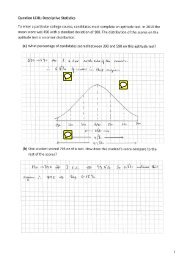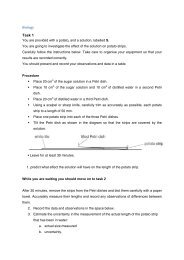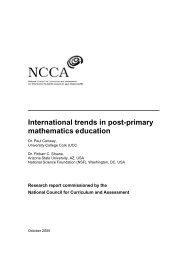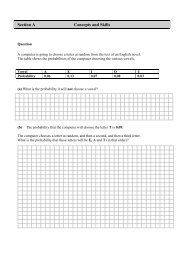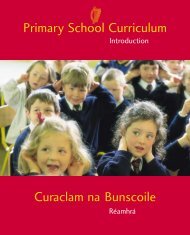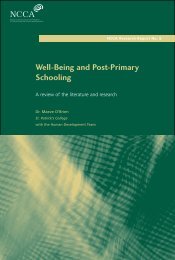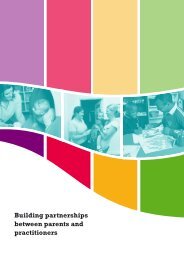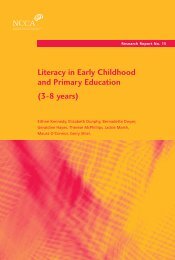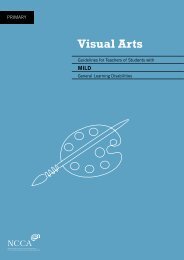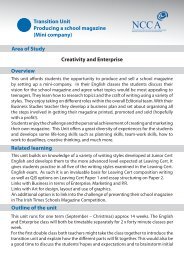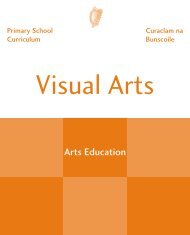Up and Away - National Council for Curriculum and Assessment
Up and Away - National Council for Curriculum and Assessment
Up and Away - National Council for Curriculum and Assessment
You also want an ePaper? Increase the reach of your titles
YUMPU automatically turns print PDFs into web optimized ePapers that Google loves.
20<br />
What is the objective of language support?<br />
The principal objective of the language support programme is to integrate the pupil as quickly as possible<br />
into all mainstream learning <strong>and</strong> activities of the school.<br />
At the beginning<br />
Newcomer pupils can be assigned to classes at any stage of the school year. Take time to:<br />
1. Find out which classes the pupils are in.<br />
At the beginning<br />
2. If possible get feedback from the class teacher with his/her first impressions – see page 22 <strong>for</strong> the type<br />
of initial in<strong>for</strong>mation that is useful. Further in<strong>for</strong>mation (see page 23) is useful at intervals during the<br />
year, <strong>for</strong> example every six weeks or half term.<br />
3. Carry out an initial basic assessment – see next page.<br />
4. Identify the most appropriate period <strong>for</strong> the child’s class each day, taking the age, class <strong>and</strong> English<br />
language proficiency of the pupil into account.<br />
5. Wait a period of weeks be<strong>for</strong>e carrying out a more <strong>for</strong>mal assessment.<br />
✓<br />
✓<br />
✓<br />
! Points to remember!<br />
Achieving an accurate assessment of a pupil shortly after arrival is unusual. It is important to allow<br />
a ‘settling down’ period be<strong>for</strong>e attempting this.<br />
Language proficiency is rarely consistent at the same level across all skills (listening, speaking,<br />
reading <strong>and</strong> writing) <strong>and</strong> across different units of work. Some pupils may appear very fluent orally<br />
but have difficulty with reading <strong>and</strong> writing (if appropriate to the age of the pupil). On occasion this<br />
situation may be reversed.<br />
The ability of any pupil to per<strong>for</strong>m in the classroom must always be viewed in relation to the<br />
per<strong>for</strong>mance of the native-speaking peer group. For example, children in the infant classes are not<br />
expected to have developed literacy.<br />
Equally, <strong>for</strong> a child in Senior Primary who is not yet literate, it is a matter of some urgency that<br />
literacy development should begin.<br />
A regular flow of communication between the<br />
class teacher <strong>and</strong> the language support teacher<br />
is vital not only to help the child to develop in<br />
language learning, but also to access<br />
curriculum learning <strong>and</strong> to socialize in the<br />
school.<br />
Taking time to observe how a child is<br />
per<strong>for</strong>ming in different situations in the school<br />
(mainstream class, playground, etc.) will help<br />
the language support teacher to identify an<br />
individual child’s particular learning needs.



